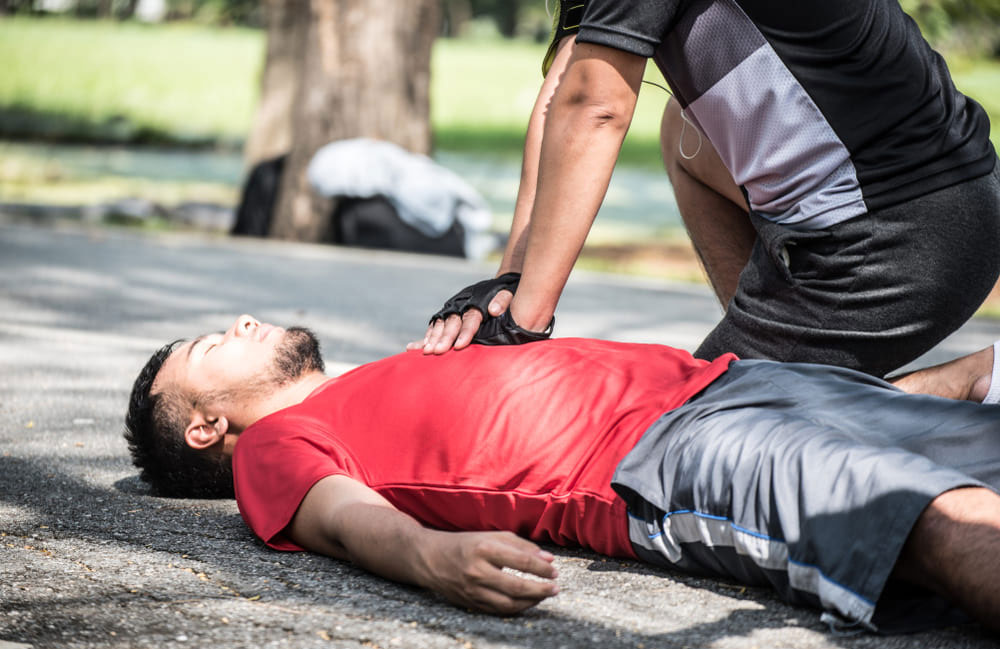


We are all aware that medical emergencies – notably cardiac arrests – can strike without warning in our fast-paced world. When someone’s life is on the line, every second counts.
Fortunately, there are individuals and organizations dedicated to being the first to step in and perform life-saving techniques like CPR (Cardio Pulmonary Resuscitation).
But what happens when these champions are concerned about legal repercussions for their actions? This is where the Good Samaritan Law comes into play.
In this blog post, we’ll explore the Good Samaritan Law and its relevance to CPR, focusing on the people who need legal protection when trained to act as first responders without waiting to think through the consequences.
The Good Samaritan Law is a legal principle that provides immunity from lawsuits to individuals who voluntarily assist those injured or in distress during an emergency or accident. This law encourages individuals to render aid without fearing being sued for unintentional harm or perceived mistakes made while trying to help.
The primary purpose of the Good Samaritan Law is to promote bystander intervention during emergencies. It seeks to overcome the hesitation many people feel when deciding to assist someone in distress. By providing legal protection, the law aims to create a society where people are more willing to provide aid without worrying about potential legal hassles.
The law sends a clear message that, in the eyes of the courts, the intention to help is more valuable than the fear of making mistakes while rendering aid.
According to Safe India, the Good Samaritan Law was passed as a Bill by the Supreme Court of India on March 30, 2016, to give the “force of law” to the guidelines created by the Ministry of Road Transport and Highways for the protection of those who came to rescue of victims of road accidents. It subsequently became a universally applied law to cover all kinds of first responders – including those giving CPR to heart attack victims.
(Incidentally, in the US, a recent push has been to establish “Bad Samaritan” laws. According to Brian West et al., writing in StatPearls Publishing, these laws seek to establish a “legal duty” of onlookers to aid those in need.)
For the dedicated and trained CPR providers who play a pivotal role in responding to cardiac emergencies, we have an evocative name – Heartstrong Heroes. These individuals, often the first line of defense in critical situations, embody bravery and compassion.
To give them the recognition and legal protection they deserve, the Good Samaritan Law offers all these kinds of security, ensuring that their selfless actions are not hindered by the fear of legal repercussions.
Those who help during heart stoppage emergencies are shielded from civil cases if they act with genuine motivations while providing CPR assistance. According to Ellis Law Corporation, the law holds that quick responders cannot be held legally responsible for inadvertent injury or mistakes during their life-saving efforts. For instance, when elderly patients are given chest compressions, their ribs may get broken. However, the law and the medical profession believe resuscitation of the heart and blood flow to the brain is much more severe than injured ribs (which can heal).
According to Emergency First Response, the law does not require helpers to be qualified doctors, nurses, or paramedics to receive protection. This law extends its safeguards to anyone who attempts CPR assistance during exigencies. Those trained or certified for their skills may be better equipped to handle real-life situations. But the law does not even look for such training or certification..
In addition to CPR, the law includes cover for using Automated External Defibrillators (AEDs). Some first responders are trained to use AEDs, although not all courses may choose to teach that. If the person giving CPR is trained in using AEDs, the law protects people who apply this life-saving device to restore normal heart rhythms in cardiac arrest cases.
An important caveat here: According to Richard Lazar, writing in LinkedIn, Good Samaritan Law protections do not cover a bystander untrained in AED use..
The law prevents individuals who offer CPR from facing harassment by anyone who may be dissatisfied with the outcome of the intervention. This protection ensures that helpers with a “Zinda Dil” can focus on the task at hand. They need not have undue concern about the family or relatives of a patient being ill-tempered or accusatory after rescue attempts have had slow or no results..
It’s important to note that the Good Samaritan Law determines whether individuals have acted in “good faith.” It tries to see if responders genuinely intend to help without malicious intent or reckless behavior. This provision ensures that protection is extended to authentic people wanting to make a positive difference..
While the specifics of the law may vary very slightly by region, the underlying principle of legal protection for those providing CPR is generally consistent, providing a sense of security and assurance to those who step forward to help in crises. Regardless of their location, the law will help those providing emergency aid as uniformly as possible nationwide..
The Good Samaritan Law’s operative mandate is to provide first responders with peace of mind to ensure they can react to a cardiac emergency without the constant worry of legal, financial, or other consequences. This assurance allows them to concentrate fully on their life-saving efforts, making it more likely that they will act swiftly and effectively to administer CPR without undue concerns.
The Good Samaritan Law does everything possible to help emergency responders. However, we can all do our best to look after our daily health. Our communities can – and must – place a lot of emphasis on preventive and proactive heart care.
According to Samuel Suede, MD, writing in Englewood Health, we all need to support one another to attend regular medical check-ups, especially if we have ailments like obesity, cholesterol, diabetes, or hypertension. These illnesses, along with other hereditary factors, can have a multiplicative impact on heart health. We must get our doctors’ help to reduce high blood pressure, monitor cholesterol levels, stay alert to diabetes signs and symptoms, and get a diet-and-exercise schedule to follow to control obesity.
The Good Samaritan Law serves as a crucial legal safeguard, protecting all persons willing to put their concerns aside to help others in dire need of CPR. By uniting the protective shield of the law with the proactive efforts of individual self-care, we can create a comprehensive approach that extends from emergency response to long-term wellness.
If ever events occur that call for urgent CPR response, be the volunteer who is service-minded. Be confident that the law secures you. Learn CPR at the first opportunity if you haven’t already done so. Become a Heartstrong Hero.
[Readers are encouraged to check and understand legal implications and applicable law of the state and India before enacting. The content is for information purpose only, Sun Pharma or its associates do not guarantee its completeness or accuracy.]